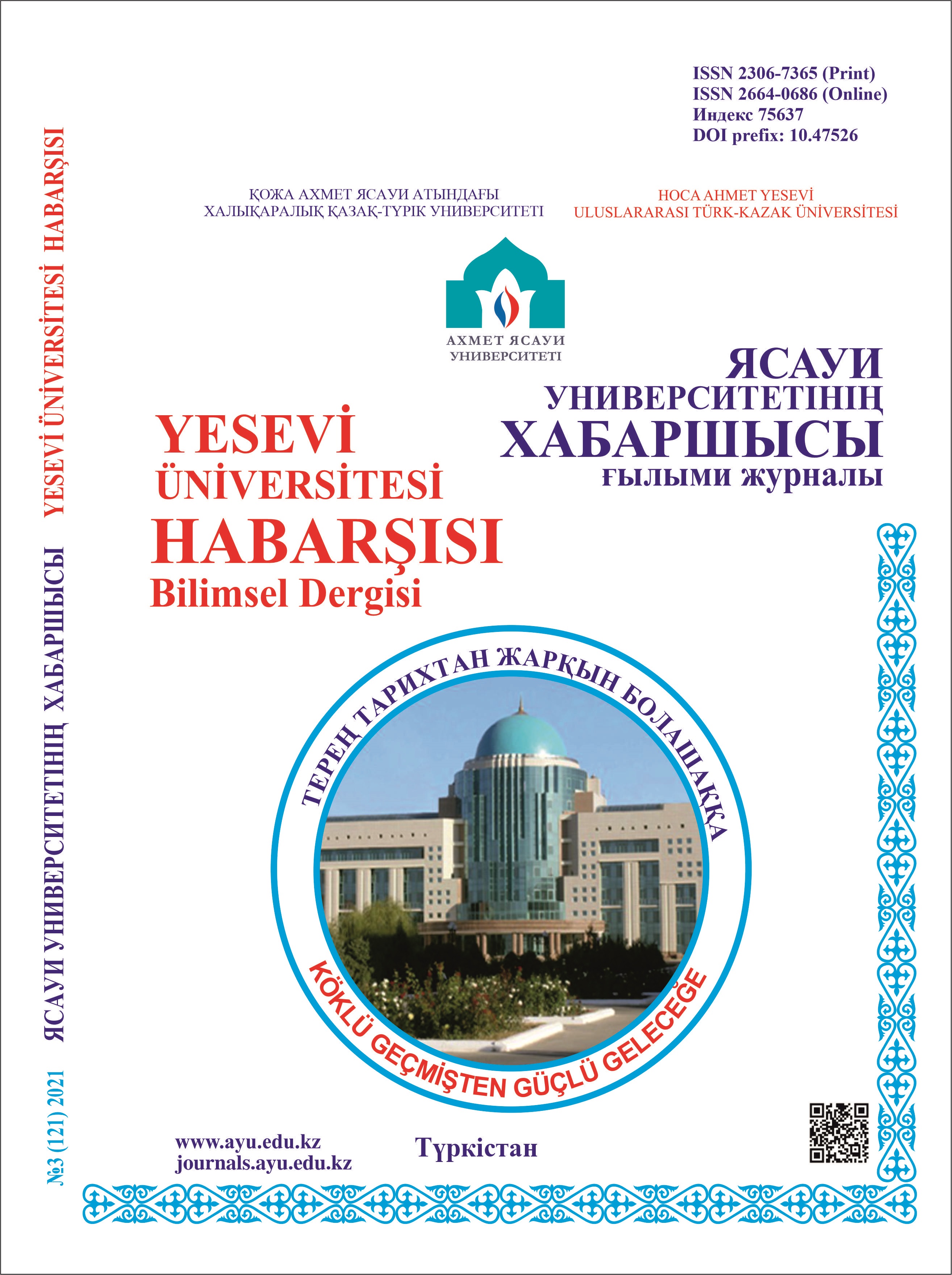The Educational Value of Visual Arts
113 62
Keywords:
fine arts, visual arts, painting, national values, culture, aesthetic education.Abstract
The article discusses the methods of using works of art and painting and their important role in enhancing the modern educational process at school. Painting, like any genre of art, has an amazing power of emotional impact: it not only broadens opens the visual horizons of the world, but also fascinates with the images depicted, for example, the Kazakh steppe is captivating with its beautiful nature. A student who comes into contact with painting expands their human capacity to love life in different ways. At the same time, they love life with a certain artistic flair, enriched by imagination and hope. This connection is a most important tool in the educational process of visual arts. The educational impact of art and painting on students is a purposeful pedagogical process aimed at forming children's ability to feel, understand, love and appreciate art, as well as create artistic values. Education in the field of art and painting is not only the process of acquiring knowledge but also formation of a worldview in the field of art and artistic creativity. Practical teaching of fine arts always addresses such a complex task as the formation of artistic literacy skills, the development of emotional perception of works of art, the enhancement of intellectual abilities, and the improvement of artistic taste. An important educational function of fine art is the artistic and aesthetic development and education of students. The study of outstanding examples of artistic creativity requires students to empathize with the heroes, develop a certain mindset, a culture of feelings, and sharpen their perception. In addition, the article describes methods for solving educational challenges using paintings in educational institutions.
The primary objective of this study is to enhance the significance and value of aesthetic education through the use of artistic works.
References
ПАЙДАЛАНЫЛҒАН ӘДЕБИЕТТЕР ТІЗІМІ
Нысанбаев Ә. «Қазақстан» Ұлттық энциклопедиясы. – Алматы: «Қазақстан энциклопедиясы» Бас редакциясы, 1998. – 720 б. 2. Джумашева А.С. Қазақстанның кәсіби бейнелеу өнерінің дамуы. [Электронды ресурс]. URL: https://www.rusnauka.com/45_PWMN_2016/Pedagogica/3_220175.doc.htm (қаралған күні 22.03.2024)
Сманов І.С. Кескіндеме педагогикасы. – Шымкент: Дортмунд. – 2021. – 110 б.
Ералин Қ. Кеңістік көріністерін бейнелеу. – Түркістан: Тұран. – 2006. – 80 б.
Ералин К.Е., Тастемиров К.Т. Методы изучения творчества народных мастеров. –Шымкент: МКТУ им. Х.А.Ясави, 1995. – 120 с.
Жанбиршиев С.Н. Отандық кескіндеме арқылы мектеп оқушыларына адамгершілік-эстетикалық тәрбие беру: пед. ғыл. канд. ... дис. – Түркістан, 2008. – 156 б.
Сманов І.С. Кескіндеменің өнер немесе тәрбиелік әлеуеті қандай болуы мүмкін // Халықаралық ғылыми-теориялық және ғылыми-әдістемелік конференция материалдары. – Шымкент, 1982. – Б. 117–120. 8. Қазақ мәдениеті. Энциклопедиялық анықтамалық. – Алматы: Аруна, 2005. – 656 б.
Шипанов А.С. Әуесқой жас суретшілер мен мүсіншілерге. – Алматы: Мектеп, 1989. – 170 б. 10. Берістен Ж. Кескіндеменің көркем кеңістігі // Егемен Қазақстан. 8 қаңтар, 2021. [Электронды ресурс]. URL: https://egemen.kz/article/260496-keskindemeninh-korkem-kenhistigi (қаралған күні 12.05.2024) REFERENCES
Nysanbaev A. «Qazaqstan» Ulttyq enciklopediasy [National Encyclopedia “Kazakhstan”]. – Almaty: «Qazaqstan enciklopediasy» Bas redakciasy, 1998. – 720 b. [in Kazakh] 2. Djumasheva A.S. Qazaqstannyn kasіbi beineleu onerіnіn damuy [Development of Professional Fine Arts in Kazakhstan]. [Electronic resource]. URL: https://www.rusnauka.com/45_PWMN_2016/Pedagogica/3_220175.doc.htm (date of access 22.03.2024) [in Kazakh] 3. Smanov І.S. Keskіndeme pedagogikasy [Pedagogy of painting]. – Shymkent: Dortmund. – 2021. – 110 b. [in Kazakh] 4. Eralin Q. Kenіstіk korіnіsterіn beineleu [Representation of space scenes]. – Turkіstan: Turan. – 2006. – 80 b. [in Kazakh] 5. Eralin K.E., Tastemirov K.T. Metody izuchenia tvorchestva narodnyh masterov [Methods of studying the creativity of folk artists]. – Shymkent: MKTU im. H.A. Iasavi, 1995. – 120 s. [in Russian] 6. Janbirshiev S.N. Otandyq keskіndeme arqyly mektep oqushylaryna adamgershіlіk-estetikalyq tarbie beru: ped. gyl. kand. ... dis. [Moral and aesthetic education of schoolchildren through domestic painting: dis.]. – Turkіstan, 2008. – 156 b. [in Kazakh] 7. Smanov І.S. Keskіndemenіn oner nemese tarbielіk aleuetі qandai boluy mumkіn [What can be the artistic or educational potential of painting] // Halyqaralyq gylymi-teorialyq jane gylymi-adіstemelіk konferencia materialdary. – Shymkent, 1982. – B. 117–120. [in Kazakh] 8. Qazaq madenietі. Enciklopedialyq anyqtamalyq [Kazakh culture. Encyclopedic reference book]. – Almaty: Aruna, 2005. – 656 b. [in Kazakh] 9. Shipanov A.S. Auesqoi jas suretshіler men musіnshіlerge [For young amateur artists and sculptors]. – Almaty: Mektep, 1989. – 170 b. [in Kazakh] 10. Berіsten J. Keskіndemenіn korkem kenіstіgі [Artistic space of painting] // Egemen Qazaqstan. 8 qantar, 2021. [Electronic resource]. URL: https://egemen.kz/article

